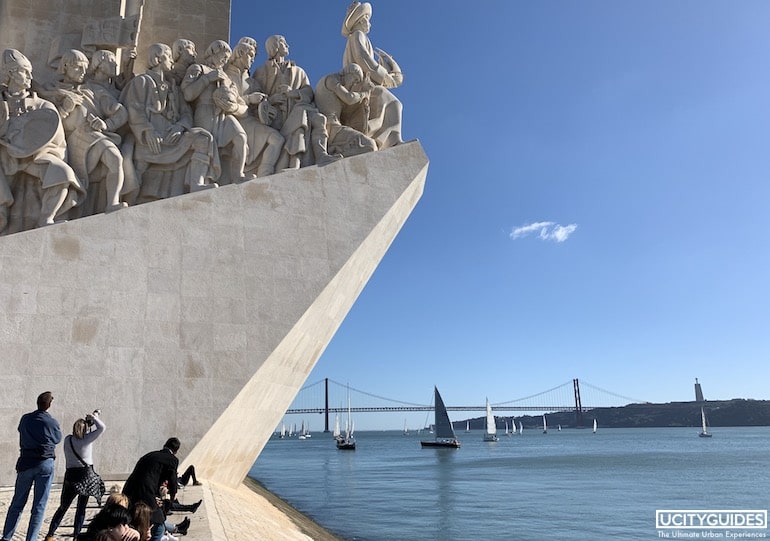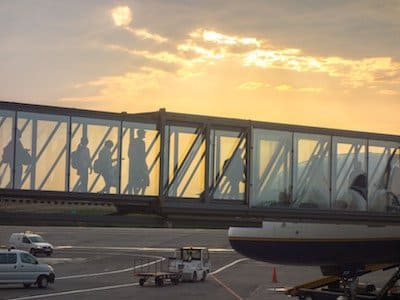Lisbon has reawakened and is now one of Europe's coolest city break destinations. The words "new" and "cool" hadn't been associated with the Portuguese capital since the 16th century, when it ruled over the world's first global empire, extending from Brazil to India. Vasco da Gama's expedition to the East brought it cultures and a touch of the exotic that Europe had never seen before -- spices (cinnamon, pepper, ginger), foods (potatoes, pineapples, tea) and animals such as the elephant and rhinoceros that paraded by the city's waterfront. When the glory days of trade and discovery were over, Lisbon fell victim to one of the most destructive earthquakes ever recorded, and remained dormant ever since. The kiss that awoke the "princess by the Tagus" came during Expo 98, the last world fair of the 20th century. The Expo site became a new neighborhood with futuristic architecture, riverfront warehouses were converted into clubs and restaurants, narrow cobbled lanes were invaded by caipirinha-holding young crowds enjoying a typically-warm night out, new boutique hotels and contemporary-design hostels opened in renovated old buildings, and an energized artistic scene brought it a renewed sense of confidence. Culture vultures have also welcomed a new world-class collection of modern art (the MAC/CCB Museum), a reborn Design and Fashion Museum, and the iconic MAAT (Museum of Art, Architecture, and Technology).
But what hasn't changed are the breathtaking hilltop views, which arguably make Lisbon the most scenic capital in Europe. Add its trademark mosaic pavements, dilapidated pastel-colored or tile-covered buildings, iconic turn-of-the-century trams, melancholic Fado music, and you also have one of the world's most soulful cities. In fact, Lisbon's unpolished appearance actually provides a seductive atmosphere all of its own, and prevents it from ever being just another bland old city.
The nearby Atlantic beaches and fairytale palaces are other attractions, although visitors will find plenty of reasons to simply embark on their own voyage of discovery in the city.
What to See and Do in Lisbon
Decide what you really want to see in Lisbon based on your interests -- whether that's art, architecture, street life or simply snapping a few photos by the main landmarks. We highlight the best attractions in different categories and, to help you plan, link you to their location on Google Maps () or to their official website or tour options ().
- The Landmarks, Icons, and Instagram Spots
- Modern and Contemporary Art
- Classic Art and Top Museums
- Striking Architecture and Major Monuments
- Ancient Site
- City Life and Main Streets
- Tours and Day Trips
- Shopping
- Eating and Drinking

The 15th-century explorers in stone, on the Discoveries Monument - ©UCityGuides.com
Pose for your camera by the storybook Belém Tower and the neighboring Jeronimos Monastery, two World Heritage monuments that stand as reminders of the great Age of Discovery. Cross the road through an underpass and do the same by the city's iconic Discoveries Monument, immortalizing the founders of the global village in stone.
A Portuguese millionaire businessman-turned-art collector needed a big space to place all of his Warhols, Picassos, Dalis, and Lichtensteins. It was provided to him inside the modern Belem Cultural Center (CCB), and a museum was created in 2007. The MAC/CCB Museum now has one of Europe's most important post-war art collections, and a visit can be followed by a concert or performance at CCB.
And in the city's main pedestrian street, the Design and Fashion Museum presents one of the world's most acclaimed design and fashion collections by the top international designers (Charles & Ray Eames, Russel Wright, and Le Corbusier, together with Dior, Vivienne Westwood, Yves Saint Laurent, and John Galliano among many others).
Before Berardo there was Gulbenkian, an oil magnate who loved sunny Portugal and moved there with his art collection in the early 20th century. His outstanding treasures (including Egyptian and Greek art, fantastic Lalique jewelry, and paintings by Rembrandt, Van Dyck, Rubens, and Renoir) were inherited by the state upon his death, giving birth to a foundation and museum in his honor. The Gulbenkian Museum now holds one of the world's finest private art collections, and includes a separate building dedicated to modern art. In between the two buildings are pleasant sculpture-filled gardens.
The Ancient Art Museum also holds a splendid collection, including works by Raphael, Dürer, and Hieronymus Bosch's "Temptation of Saint Anthony". Other highlights are the "Adoration of St. Vincent" (showing Prince Henry the Navigator and other historical figures), fascinating Japanese screens depicting the Portuguese arriving in Japan and the Japanese's first encounter with Europeans, and priceless gems brought back by Vasco da Gama. Take a break at the lovely garden and cafeteria.
In the late 1990's American architect Peter Chermeyeff designed a building rising from the water that opened in time for Lisbon's ocean-themed World Fair, Expo98. It's the Oceanarium, one of the world's largest aquariums, featuring high-tech displays. Inside the state-of-the-art tank, 25,000 creatures ranging from sharks to seahorses swim in harmony. It incorporates world ocean habitats in one place, allowing visitors to dive deep into the sea and discover the underwater world.
Once back outside, walk towards the river and climb into a cable car for views over Vasco da Gama Bridge, which is Europe's largest. Be sure to also take a look at Oriente Station nearby, a stunning Santiago Calatrava creation, as well as the Portugal Pavilion by Siza Vieira for its striking wavy concrete roof.
Some of its walls have been overlooking the city for close to a millennium, and still stand as the city's crown. From the peaceful ramparts of St. George's Castle, visitors are offered breathtaking bird's-eye views over the city, while one of the rooms that have survived battles and earthquakes over the centuries exhibits archaeological finds from the site. Inside one of the towers is also a periscope projecting sights from around the city, while the terrace gardens are a great spot to sit and admire the sunset amid roaming peacocks.
Laundry hanging from wrought-iron balconies flap against graffiti-covered walls. Behind nondescript doors and windows are alternative clothing shops and cosmopolitan bars and restaurants. Sleeps during the day while old ladies gossip from their windows; awakes at night when different young tribes invade its cobbled lanes... That is the life of Bairro Alto, Lisbon's bohemian quarter and decadent shabby-chic restaurants-bars-and-nightlife Mecca. Shop at its trendy shops in late afternoon just before a typically-late dinner, and stay for Europe's biggest weekend bar crawl.
To escape the city, the perfect destination has always been Sintra. Just about 40 minutes by train from central Lisbon, this World Heritage town has quite a magical atmosphere, enhanced by its Disney-esque fairytale palaces. Pena Palace is a must-see, being one of the most fantastic storybook royal palaces you'll find in Europe. Quinta da Regaleira and the National Palace are two other exquisite and exotic architecture highlights.
If you prefer to go by the shore, take the train from Lisbon's central Cais do Sodré Station and in about 30 minutes you can be in Estoril's Tamariz Beach overlooked by the castle-residence belonging to the royal family of Monaco. Facing the beach is Europe's largest Casino, which inspired Ian Fleming to write his first James Bond novel. During World War II this was the place for European nobility (and spies) to escape to. They also turned Cascais into a fashionable little beach town which is connected to Estoril by a waterfront boardwalk. Cascais is quite beautiful, especially its Guincho Beach, made famous as a spot for World Surfing Championships.
Check if the international luxury brands have any special offerings in their Lisbon shops down Avenida da Liberdade and look for the sophisticated independent shops down Rua Dom Pedro V in the Principe Real neighborhood. And don't overlook the charming old shops in Chiado and Baixa.
Dinner time in Lisbon is always after 8PM and often after 9 or 10PM on weekends. Eating out is quite cheap when compared to other Western European capitals, and a wide range of restaurants are clustered in the Bairro Alto neighborhood. Tourist-friendly options with local and international cuisine are found in the pedestrian Rua das Portas de Santo Antão and Praça do Comércio downtown, and by the marina Docas de Santo Amaro with outdoor seating and wonderful views.




